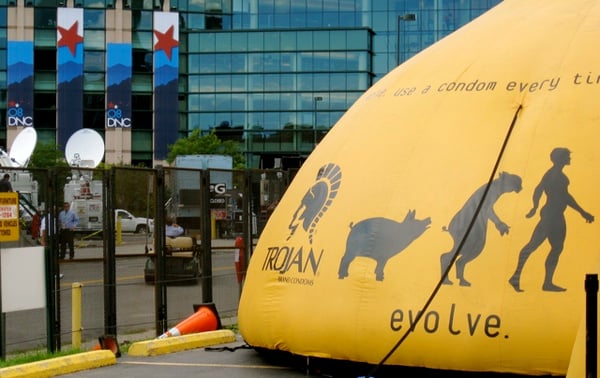 Politics has never been severed from pageantry, and it cannot be. It was for good reason that kings and pashas installed their thrones in high-ceilinged rooms covered in gilt and arabesques, why they displayed gaudy coats of arms and their armies raised banners. To impress themselves upon their subjects in rooms furnished with majesty was one of their central requirements. Majesty was convertible to authority, which in turn was convertible to power.
Politics has never been severed from pageantry, and it cannot be. It was for good reason that kings and pashas installed their thrones in high-ceilinged rooms covered in gilt and arabesques, why they displayed gaudy coats of arms and their armies raised banners. To impress themselves upon their subjects in rooms furnished with majesty was one of their central requirements. Majesty was convertible to authority, which in turn was convertible to power.
There was something in these displays for commoners, too. An audience with great and grand power must have felt, for a moment at least, like the opening of a window out of confinement. If a momentary taste of palatial glory was the only taste the subjects ever received, it was all the more glorious for its rarity—this the monarch quickly discovered.
Politics everywhere involves pageantry, then. But the United States threw open the gates to special, gaudy adventures in pageantry. It aspired from its inception to democratize the spectacle of power. If the idea of the new nation was to inspire millions with the belief, deluded or not, that by right they had a place in that spectacle, what better way than to afford them rites of participation? Not principle alone drove the American Revolution, not even interests alone, but the rewards of the common experience and display of solidarity. The Boston Tea Party was not only an interference with despised trade, it also was a costume party.
The historian Michael McGerr notes in The Decline of Popular Politics that Election Day was not always a free-standing outpost of politics, preceded by private life and followed by more private life. It was the culmination of days of pageantry. Thousands of men paraded through town for days, carrying banners, shouting slogans, carousing, singing, and drinking. The pageant mobilized citizens by exciting them. In nineteenth-century America, the citizens who attended debates hooted and cheered. Look at any edition of the Lincoln–Douglas debates and you’ll see transcriptions of the heckling, too.
It has become customary to deplore the ritualization of party conventions. No longer are there real contests with multiple ballots and the possibility of surprises, as in 1956, when Adlai Stevenson allowed the delegates to freely choose his vice-president. As we all know, conventions have become scripted, the speeches more contrived, the roll-calls scarcely thrilling. In television terms, this is drama without climax. Accordingly, the networks have cut back their coverage, a decision few if any critics lament.
This is my first time inside a party convention hall, though I did spend several sweaty, scary, heady, tear-gas-soaked days in Chicago forty years ago. But after one day in Denver, I have a different idea about what a convention is for. It’s a rally of people who are, like it or not, oddballs—citizens who care about the fate of their country and believe that partisan politics provides a way for them to influence that fate. It’s a reunion; an occasion for gossiping, social climbing, reconnoitering, and drinking. The delegates smile at one another, shake hands, make friends, and who knows who or what else. They dress up for one another and feel as though this sometimes contentious, sometimes abstract party is theirs. The New York Times may think they’re silly to believe this, but they believe it nevertheless.
Of course, the party aims to showcase the candidates, to brand itself, to put on a show for the people at home. This they must do. But the sustaining point, really, is the pageantry. The convention is the time when the whole national party exists.



























































































